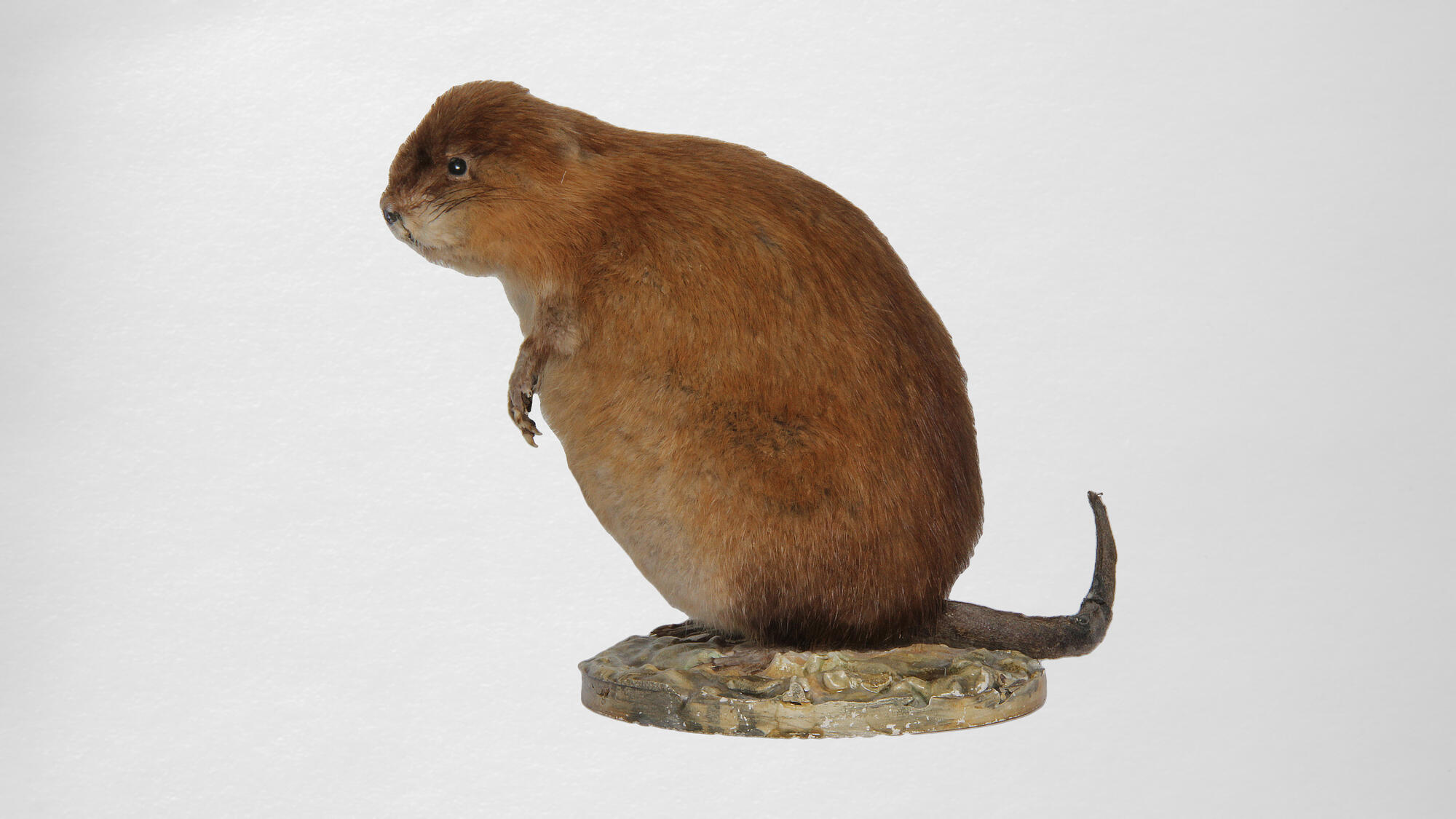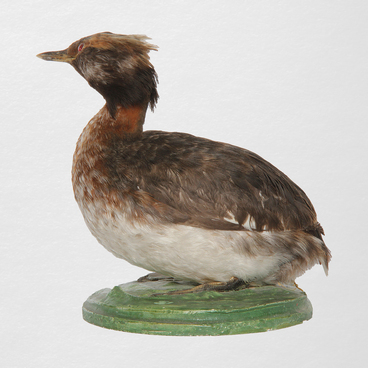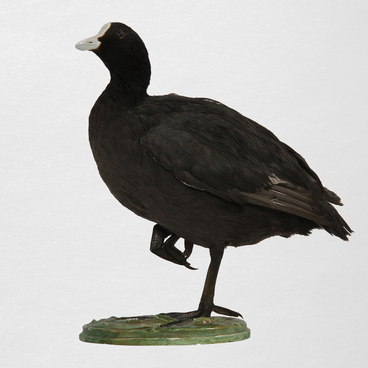The muskrat is native to North America and was introduced to Europe several times in the early 20th century. It came to the territory of Russia in 1926 and by the end of the 1940s, it became an important fur-bearing animal. Over time, this rodent settled across the vast territory of Northern Eurasia — from Western Europe to Mongolia, China and Korea.
The muskrat looks like a large rat. Its body can be 36 centimeters long, and its tail grows up to 28 centimeters. The animal weighs from 700 grams to 2 kilograms.
The muskrat has a strong round body, a short neck and a small head with a blunt muzzle. The ears practically do not protrude from the fur, and the eyes are small and set high — these are important adaptations for the semi-underwater lifestyle that she leads. The upper lip of the muskrat seems to be divided into two halves, through which the incisors can be seen. Due to this structure of the jaw, the animal dives deep and can bite through and eat underwater plants with a practically closed mouth, without choking.
On the front paws of the muskrat there are four long toes with large claws and one small one, with which it is convenient to dig the ground. There are five hind toes, with sharp long claws and membranes, thanks to which the paws look like flippers.
When the muskrat swims, it uses not only the membranes on its hind legs, but also its tail. It looks like a paddle and helps the animal to stay afloat. The muskrat also dives very well and can spend up to 17 minutes under water.
Muskrat fur consists of coarse guard hairs and soft undercoat and does not get wet in water. The rodent carefully looks after its fur: it constantly cleans it, combs and lubricates it with greasy secretions. Fur color can be brown, dark chocolate and sometimes black.
The muskrat loves to live in freshwater, but it can also settle in slightly swampy areas and lakes. Depending on the area where the animal lives, its dwelling has different characteristics. These can be burrows-tunnels with numerous winding corridors or huts on the surface, built of silt and vegetation.
The muskrat feeds mainly on plant food: aquatic plants and their roots, tubers, shoots of coastal shrubs and grasses. It loves reeds, horsetails, duckweed and sedge. Part of the rodent’s diet consists of animal food. The muskrat can fish for small fish, mollusks, frogs and crustaceans, and it also eats the remains of dead animals. In winter, the muskrat feeds on plant parts that are deep under water, its own supplies and sometimes it steals food from beavers' dams.
The life span of a muskrat in the wild is short — it is only three years. When it is looked after, this rodent can live up to 10 years.
The muskrat looks like a large rat. Its body can be 36 centimeters long, and its tail grows up to 28 centimeters. The animal weighs from 700 grams to 2 kilograms.
The muskrat has a strong round body, a short neck and a small head with a blunt muzzle. The ears practically do not protrude from the fur, and the eyes are small and set high — these are important adaptations for the semi-underwater lifestyle that she leads. The upper lip of the muskrat seems to be divided into two halves, through which the incisors can be seen. Due to this structure of the jaw, the animal dives deep and can bite through and eat underwater plants with a practically closed mouth, without choking.
On the front paws of the muskrat there are four long toes with large claws and one small one, with which it is convenient to dig the ground. There are five hind toes, with sharp long claws and membranes, thanks to which the paws look like flippers.
When the muskrat swims, it uses not only the membranes on its hind legs, but also its tail. It looks like a paddle and helps the animal to stay afloat. The muskrat also dives very well and can spend up to 17 minutes under water.
Muskrat fur consists of coarse guard hairs and soft undercoat and does not get wet in water. The rodent carefully looks after its fur: it constantly cleans it, combs and lubricates it with greasy secretions. Fur color can be brown, dark chocolate and sometimes black.
The muskrat loves to live in freshwater, but it can also settle in slightly swampy areas and lakes. Depending on the area where the animal lives, its dwelling has different characteristics. These can be burrows-tunnels with numerous winding corridors or huts on the surface, built of silt and vegetation.
The muskrat feeds mainly on plant food: aquatic plants and their roots, tubers, shoots of coastal shrubs and grasses. It loves reeds, horsetails, duckweed and sedge. Part of the rodent’s diet consists of animal food. The muskrat can fish for small fish, mollusks, frogs and crustaceans, and it also eats the remains of dead animals. In winter, the muskrat feeds on plant parts that are deep under water, its own supplies and sometimes it steals food from beavers' dams.
The life span of a muskrat in the wild is short — it is only three years. When it is looked after, this rodent can live up to 10 years.



